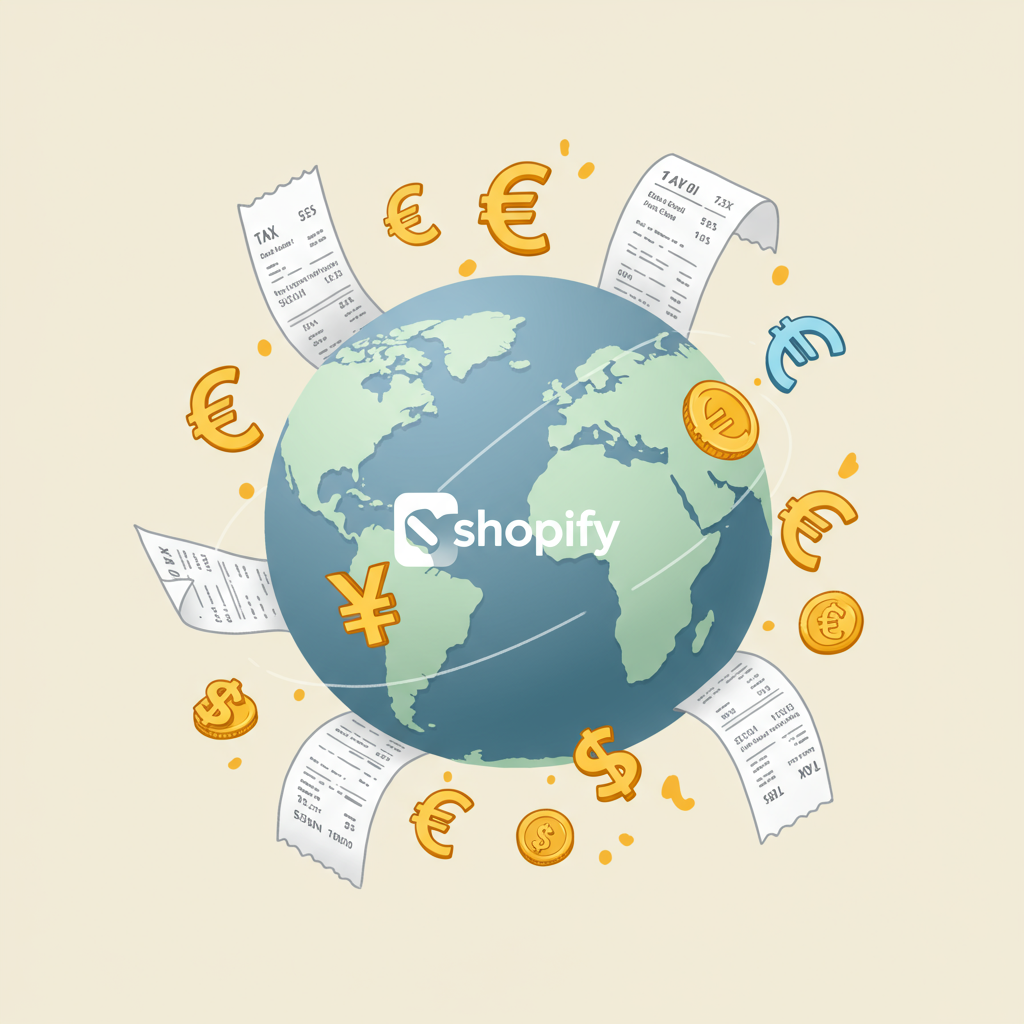A comprehensive guide for Shopify merchants navigating the intricate world of international tax regulations and ensuring compliance in the evolving e-commerce landscape.
Welcome, fellow Shopify merchants! As we approach 2025, the world of e-commerce continues to expand, bringing incredible opportunities but also increasing complexities, especially when it comes to tax compliance.
I know, taxes aren’t the most exciting topic, but they are absolutely critical for the long-term success and legality of your online business. Ignoring them can lead to hefty fines, legal issues, and a lot of unnecessary stress.
My goal with this article is to demystify global tax compliance for your Shopify store. We’ll explore the key concepts, country-specific nuances, and how Shopify’s tools can assist you, all updated for the 2025 landscape.
One of the foundational concepts you need to understand is ‘nexus.’ This refers to a significant presence in a state or country that obligates your business to collect and remit sales tax or VAT.
Traditionally, physical presence (like an office or warehouse) created nexus. However, the digital age introduced ‘economic nexus,’ meaning you can establish a tax obligation based purely on sales volume or transaction count within a jurisdiction.
It’s crucial to differentiate between sales tax (common in the US) and Value Added Tax (VAT) or Goods and Services Tax (GST), which are prevalent in most other parts of the world. While both are consumption taxes, their mechanics differ significantly.
Sales tax is typically added at the point of sale and remitted by the seller. VAT/GST, on the other hand, is collected at each stage of the supply chain, with businesses able to reclaim VAT paid on their purchases.
Beyond these, we’re also seeing the rise of ‘digital services taxes’ in many countries, targeting revenue generated from digital services, which can impact how you sell digital products or subscriptions.
Shopify offers a built-in tax engine, Shopify Tax, designed to help you calculate and collect sales tax or VAT at checkout. It’s a powerful tool that can automate much of the heavy lifting.
However, it’s important to remember that Shopify Tax is a calculation tool, not a substitute for professional tax advice. It relies on the information you provide and the settings you configure.
For more complex scenarios or for businesses with significant international sales, I often recommend integrating with third-party tax compliance apps like Avalara or TaxJar. These services offer more robust features, including automated filing and nexus tracking.
Let’s dive into some specific regions, starting with the United States. The 2018 Wayfair Supreme Court decision revolutionized sales tax, allowing states to require out-of-state sellers to collect sales tax based on economic nexus.
This means if your Shopify store sells enough into a particular US state (e.g., over $100,000 in sales or 200 transactions), you might have an obligation to register and collect sales tax there, even if you have no physical presence.
Each state has its own unique economic nexus thresholds, tax rates, and rules for what is taxable. It’s a patchwork system that requires careful monitoring.
Furthermore, many states have ‘marketplace facilitator’ laws, which mean platforms like Shopify (or Amazon, Etsy) are responsible for collecting and remitting sales tax on behalf of their sellers for sales made through their marketplace.
Moving to Europe, the EU’s VAT system is complex but has seen significant simplification efforts. The One Stop Shop (OSS) scheme, introduced in 2021, allows businesses to register in one EU country and report all their EU-wide B2C sales there.
This dramatically simplifies compliance for distance selling within the EU, replacing the old system of individual country thresholds. If you sell to consumers across the EU, OSS is a game-changer.
For imports of low-value goods (up to €150) into the EU, the Import One Stop Shop (IOSS) scheme allows you to collect VAT at the point of sale, ensuring a smoother customs process for your customers.
The United Kingdom, post-Brexit, has its own distinct VAT rules. If you’re selling to UK customers, you’ll need to understand the new import VAT rules, especially for goods valued at £135 or less.
For these low-value goods, the seller is generally responsible for collecting and remitting UK VAT at the point of sale, rather than the customer paying it upon import. This is a significant shift.
In Canada, you’ll encounter the Goods and Services Tax (GST) at the federal level, along with Harmonized Sales Tax (HST) in some provinces (which combines GST with provincial sales tax), and separate Provincial Sales Taxes (PST) or Quebec Sales Tax (QST) in others.
Australia operates with a Goods and Services Tax (GST). Similar to the UK, Australia requires overseas businesses to collect GST on low-value imported goods (under AUD$1,000) sold to Australian consumers.
Beyond these major regions, countries in Asia, South America, and the Middle East each have their own unique tax systems, often with specific rules for digital goods, services, and cross-border e-commerce.
Staying updated on these ever-changing regulations is paramount. Tax laws are dynamic, and what’s compliant today might not be tomorrow. I recommend subscribing to tax news alerts and industry publications.
Finally, while I’ve provided a comprehensive overview, I cannot stress enough the importance of seeking professional tax advice. A qualified accountant or tax specialist familiar with e-commerce can provide tailored guidance for your specific business model and sales channels.
They can help you determine your nexus obligations, register for the correct tax IDs, and ensure your Shopify setup accurately reflects your compliance requirements. This investment can save you significant headaches down the line.
What do you think about this article? Is there anything else you’d like me to cover regarding Shopify tax compliance?
In conclusion, navigating global tax compliance for your Shopify store in 2025 requires diligence, understanding, and leveraging the right tools. By being proactive and informed, you can ensure your business thrives legally and efficiently in the global marketplace.






